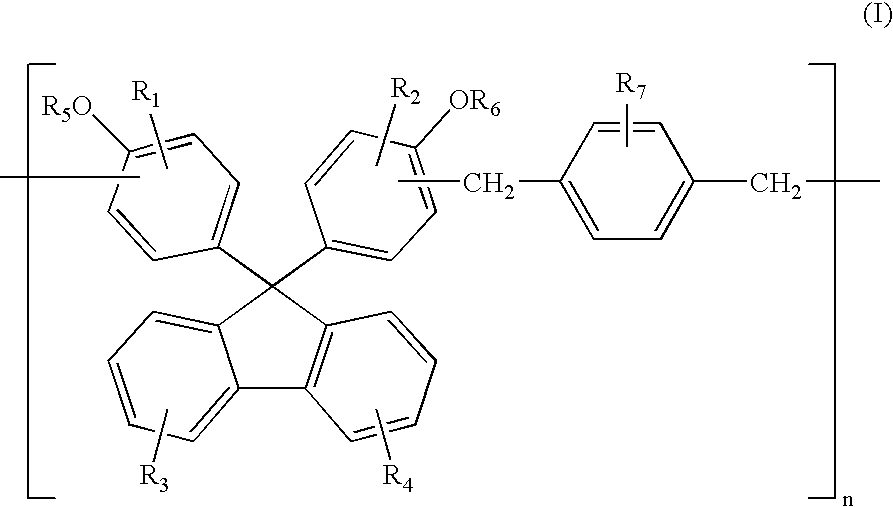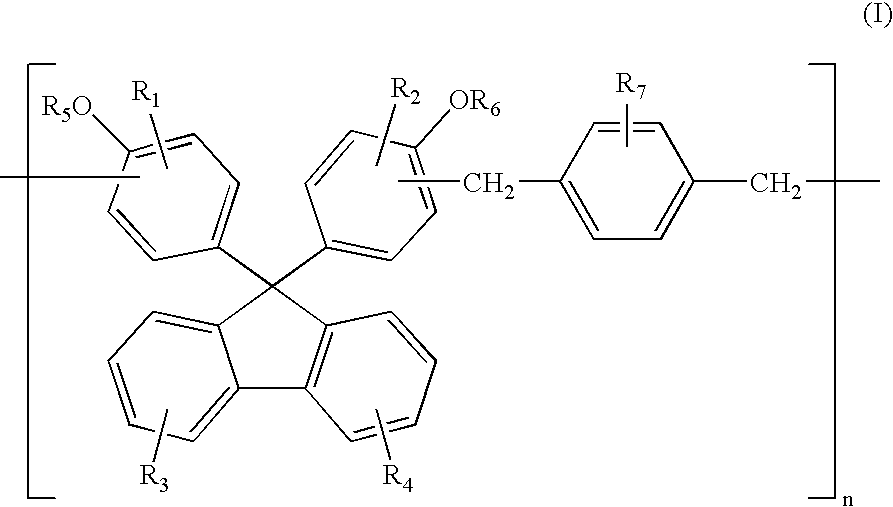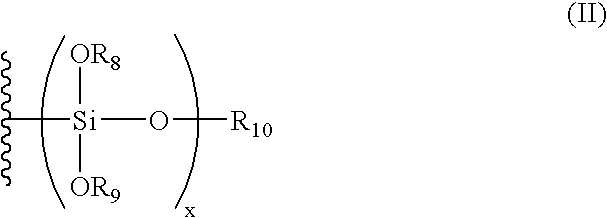Antireflective hardmask composition and methods for using same
- Summary
- Abstract
- Description
- Claims
- Application Information
AI Technical Summary
Benefits of technology
Problems solved by technology
Method used
Image
Examples
examples
[0076] Compound 1:
Synthesis of Compound 1 by Method 1:
[0077]18.78 g (0.113 mol) of p-xylene dimethylether, 0.15 g (0.0012 mol) of oxalic acid dehydrate, and 200 g of propylene glycol monomethyl ether acetate (PGMEA) were mixed in a 1 L four-neck flask equipped with a mechanical agitator, a condenser, a 300 mL dropping funnel, and nitrogen feed tube, while stirring at 130° C. for 10 minutes while nitrogen gas is supplied to the flask. A solution of 4,4′-(9-fluorenylidene)diphenol (50.43 g, 0.138 mol) in PGMEA (200 g) was slowly added dropwise for 2 hours. The resulting mixture was allowed to react for 4 hours. After the reaction temperature was then lowered to room temperature to complete the reaction, the acid was removed using water. Methanol, diethylene glycol, and a mixed solvent thereof were used to remove low molecular weight compounds containing the monomers, yielding the desired phenol resin (Mw=10,000, PDI=2.0, unreacted monomer =0.22%).
Synthesis of Compound 1 by Metho...
PUM
 Login to View More
Login to View More Abstract
Description
Claims
Application Information
 Login to View More
Login to View More - R&D
- Intellectual Property
- Life Sciences
- Materials
- Tech Scout
- Unparalleled Data Quality
- Higher Quality Content
- 60% Fewer Hallucinations
Browse by: Latest US Patents, China's latest patents, Technical Efficacy Thesaurus, Application Domain, Technology Topic, Popular Technical Reports.
© 2025 PatSnap. All rights reserved.Legal|Privacy policy|Modern Slavery Act Transparency Statement|Sitemap|About US| Contact US: help@patsnap.com



